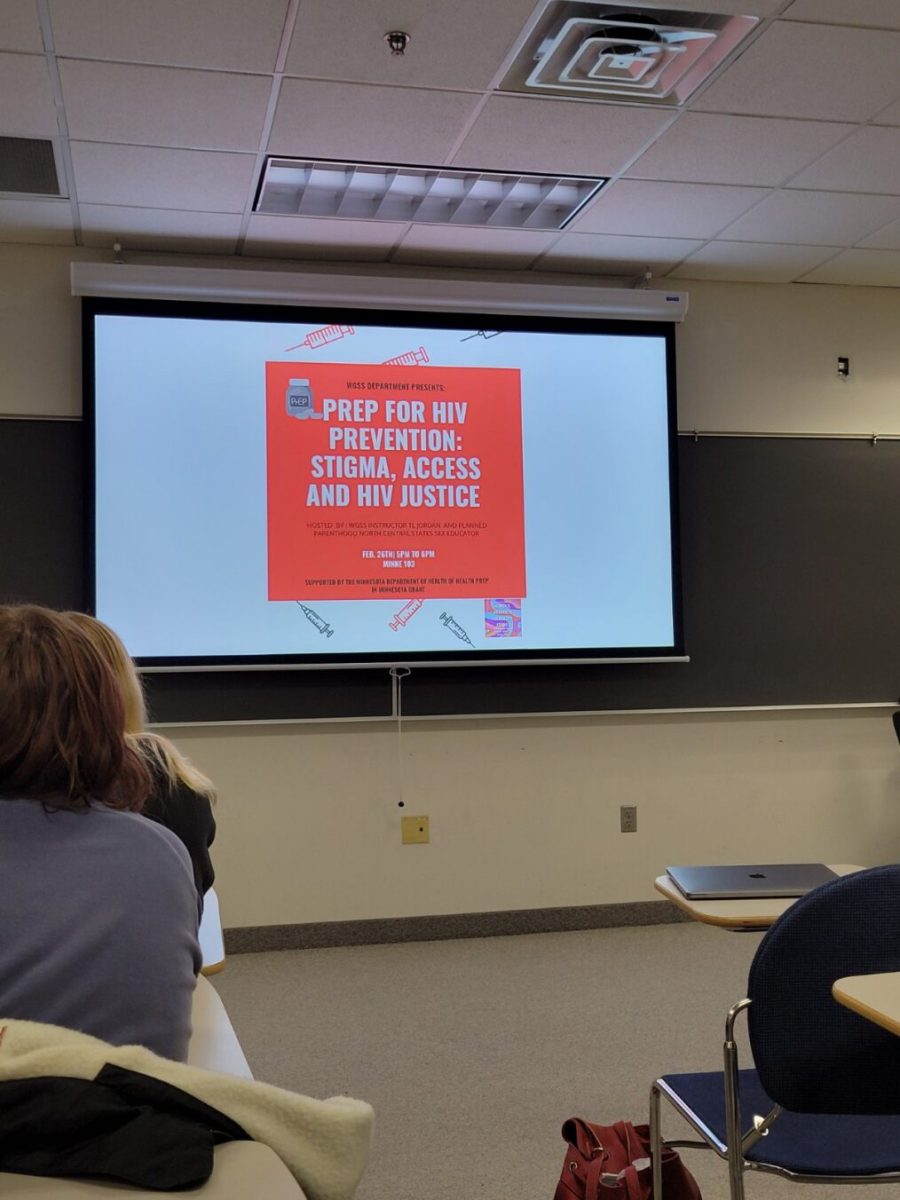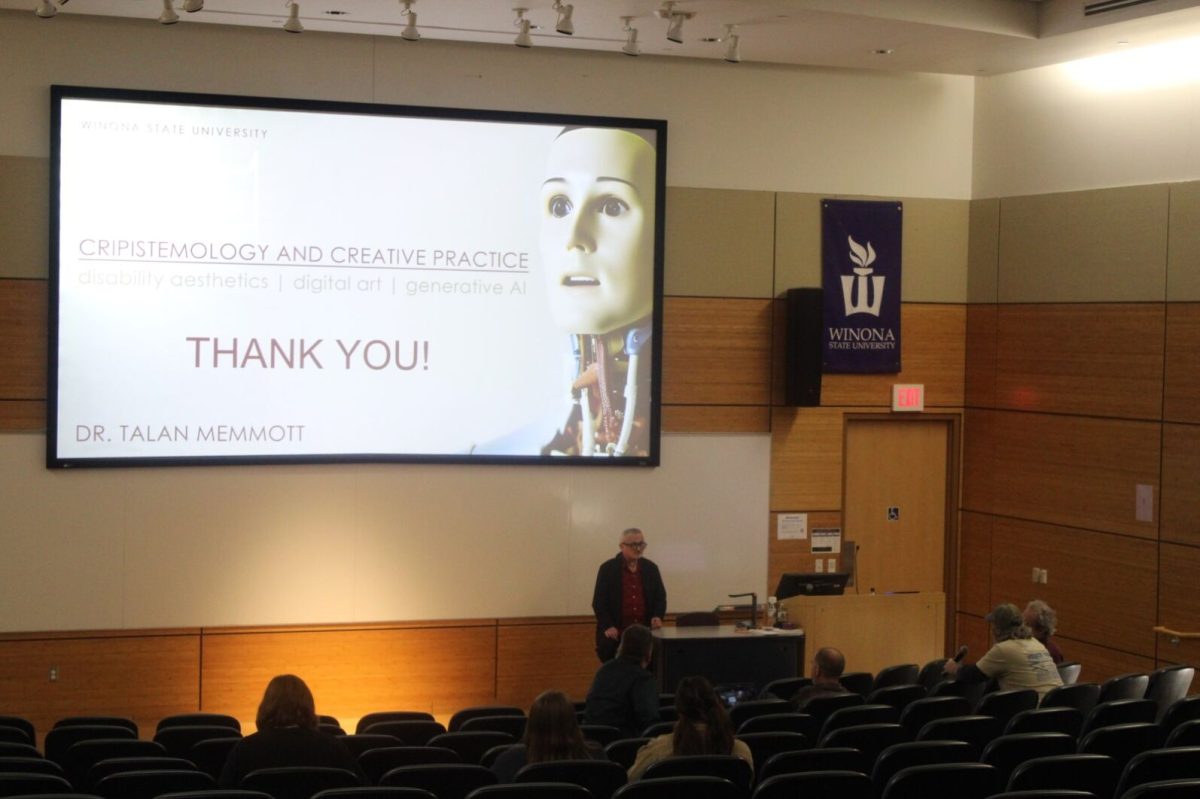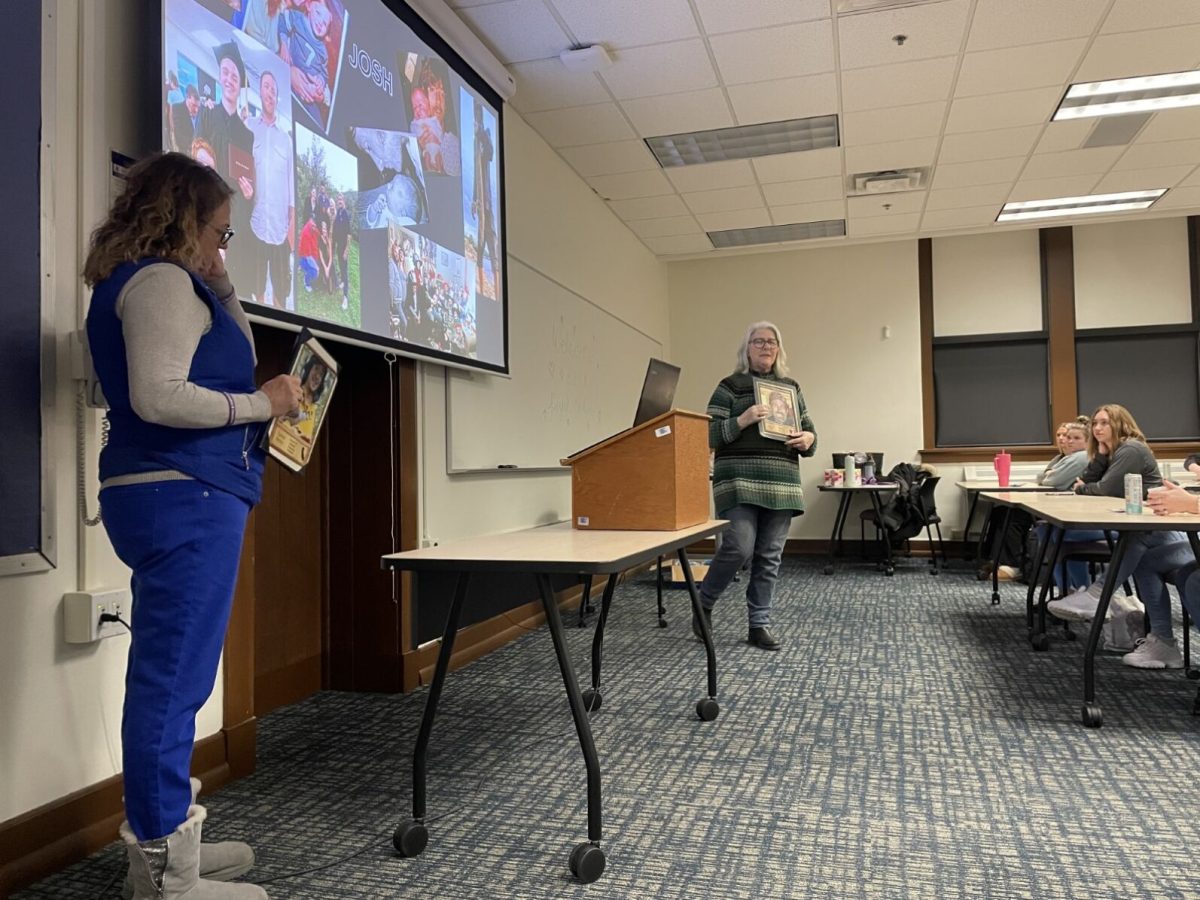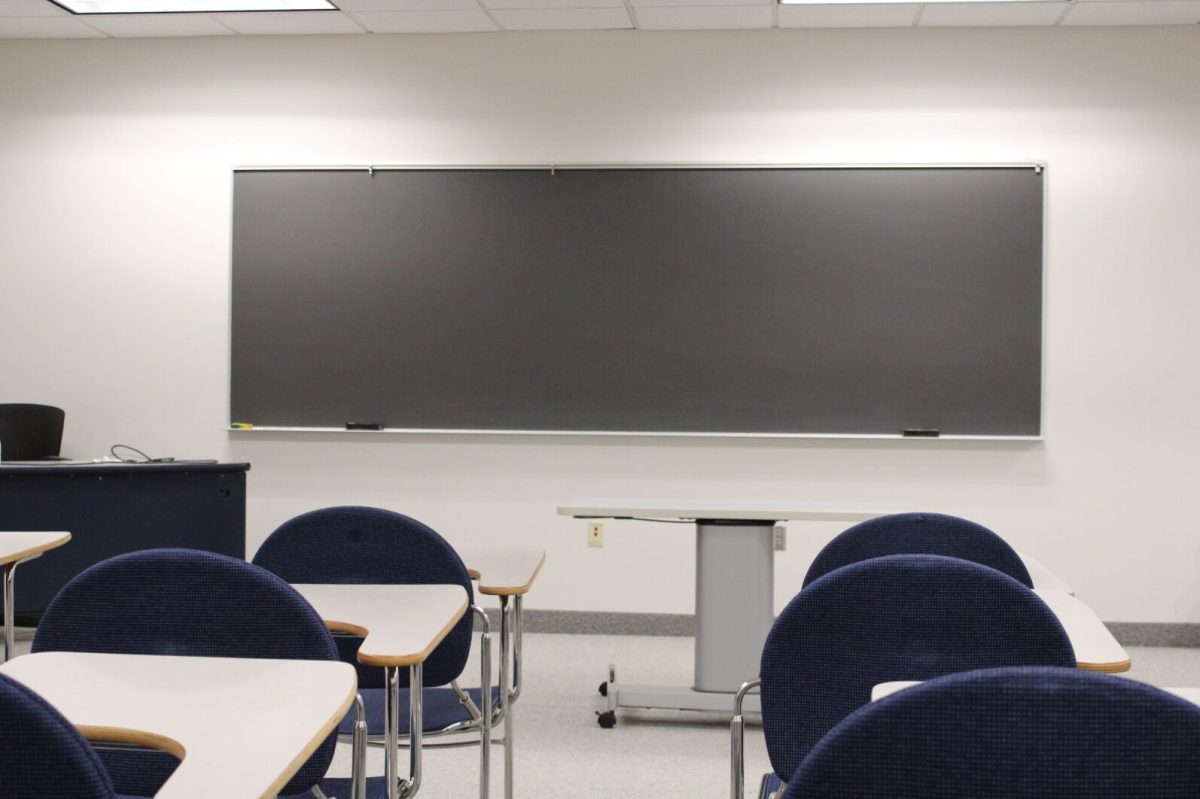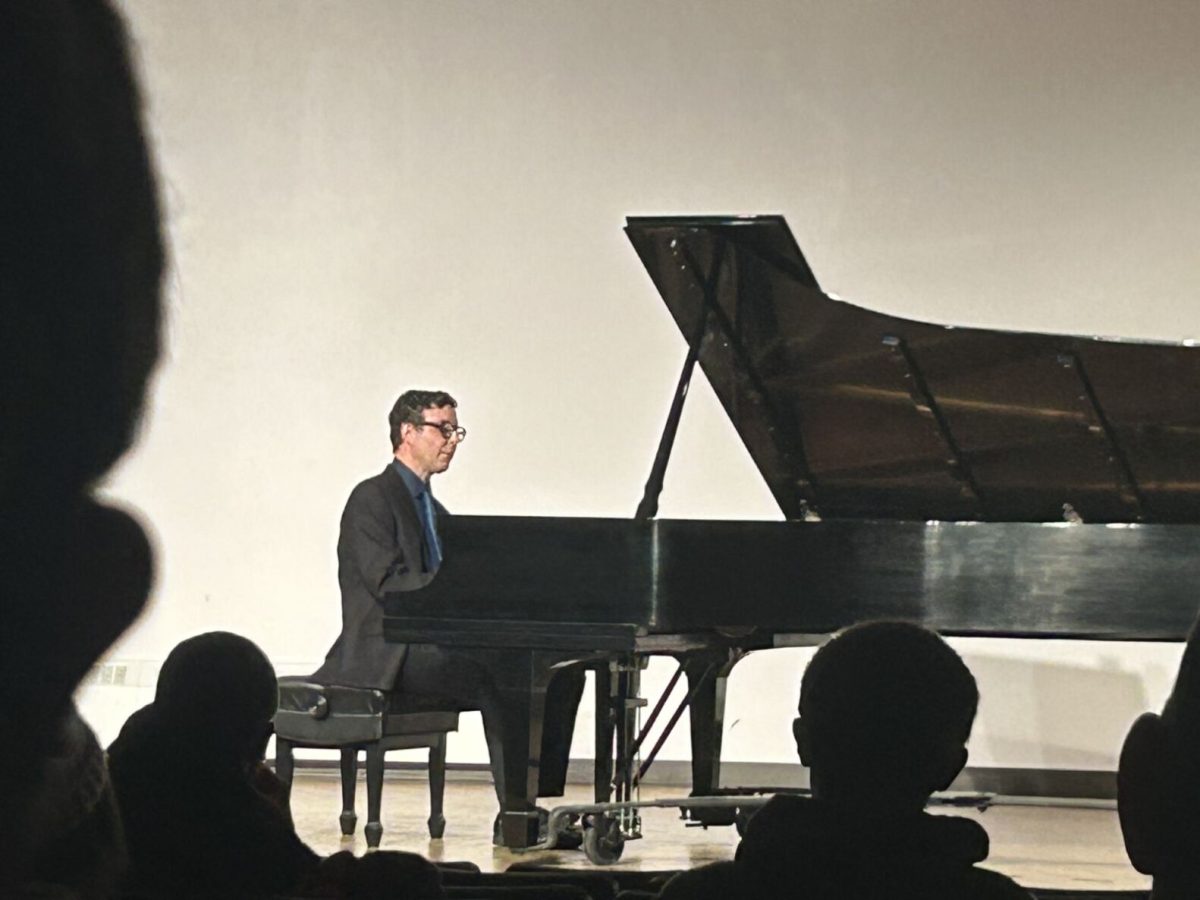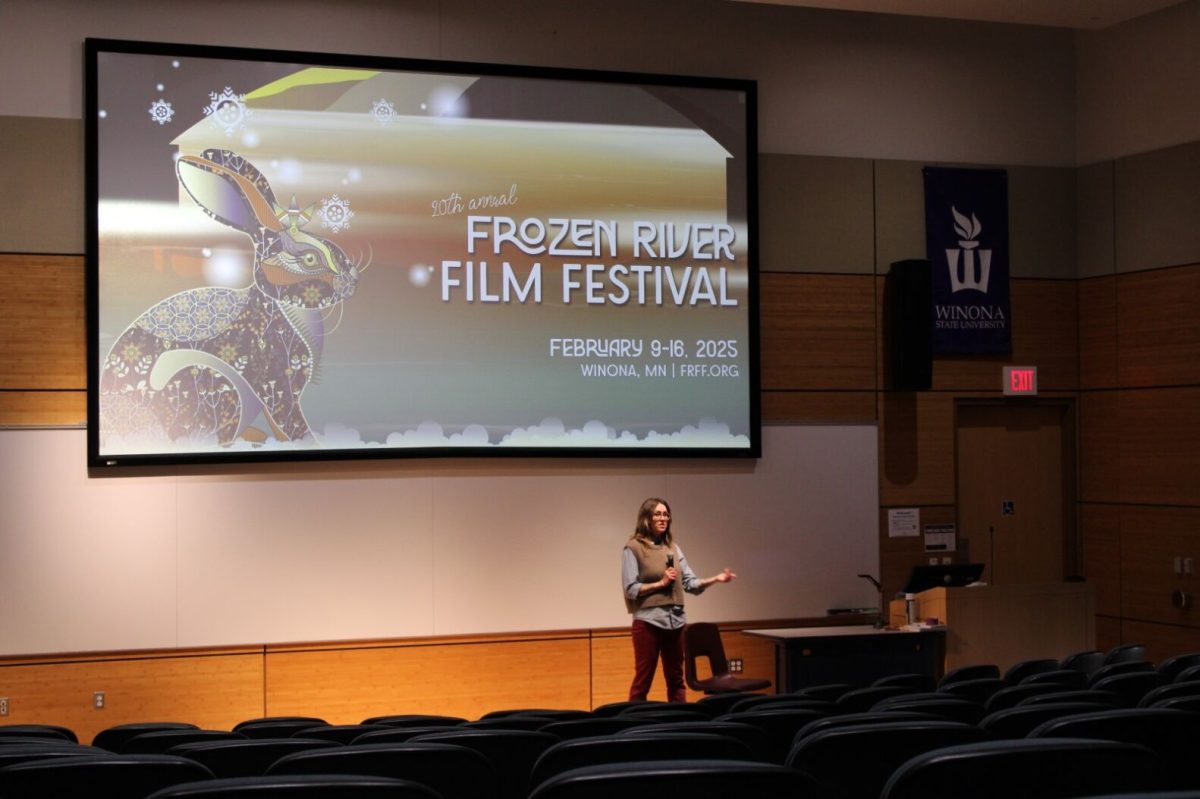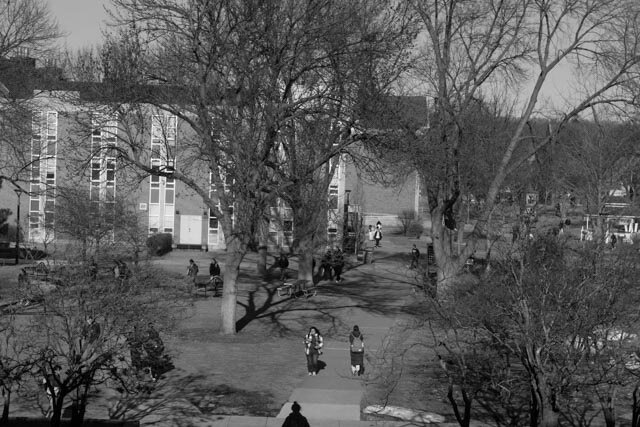Karin Chandler/Winonan
Industrialization has decimated prairie life in the region surrounding Winona, said a member of Meadowlark Restorations in his presentation Monday Nov. 5 at Winona State University.
Scott Leddy is a member of the non-profit organization that works to restore and preserve bluff and prairie lands in southeastern Minnesota.
They are also working on documenting the various species of organisms.
Leddy talked about the restoration his group is doing on the bluffs and invited audience members, if interested, to get involved with what they see and hear.
To show the problem with the bluffs, he presented a slideshow with pictures of the different species around the bluffs. This included trees, insects, plants, and other miscellaneous living organisms.
Sunday Zhang, a student, said, “I found out about a lot of things that we didn’t see in our books.”
Photographs of Winona were shown from 1915 and 1920 to illustrate the succession of trees.
Leddy said, “It’s not just the prairies dying, but also the woods and the savannah.”
In the springtime, the area is burned. “A lot of people burn the whole bluff at once which kills a lot of species,” Leddy said, “We only burn sections at a time.”
Leddy said, “We focus a lot on pollinator work because they’re in decline. The pollinators aren’t doing very well; our pollinators are down. The fields used to be covered in red from the Indian paintbrush, a flower, but now they’re hard to find.”
Leddy talked about how the Winona area has changed.
“There used to be a nice prairie in Winona,” he said. “The FedEx building sits on it now. This area has been taken over by farmers and the lumber industry. They’ve rewritten our history; it’s kind of sad.” Leddy continued, “Prairie lilies used to be very common. Now they are rare.”
He also talked about dragonflies and grasshoppers.
“There are so many dragonflies on these prairies,” he said. “There are clouds of them. It’s a heck of a time trying to figure out which ones they are. There’s more than 100 species of grasshoppers, but they are dying because of pesticides in Minnesota.”
“Species-wise, this is nothing what I’m showing you. There’s so much more. It’s really tragic,” Leddy said.
He then asked, “What’s going to be done to reverse it?”
Meadowlark Restorations welcomes volunteer support. All its work, so far, has been done on private land.
The organization gets its primary funding from the original surveyors of the Winona area.
“If we don’t preserve and monitor and take care of them, they will not survive,” Leddy said.
Students seemed interested in Leddy’s presentation.
McKenzie Kline, a student, said, “I was amazed that we had that species of snakes, lizards, and spiders.”
Others wanted to learn more about Meadowlark Restorations.
Jessica Dorman, another student, said, “It was really interesting, and I wanted to know more about the company and how to get involved.”
Some students felt inspired to help in the effort, saying they’d like to volunteer in the spring.
Contact Karin at KChandler08@winona.edu

